Penny stocks are low-priced shares, often with micro-cap valuations. They attract investors for their high return potential and small capital requirement.
However, penny stocks are highly speculative due to low liquidity, volatility, and the lack of comprehensive financial data.
This guide explains how to pick profitable penny stocks for your portfolio. We also cover the benefits and risks to consider when investing in these assets.
Here are the key points to know about penny stocks:Penny Stocks Trading – Key Takeaways
What is Penny Stocks Trading?
Penny stocks are shares of publicly traded companies that typically have low prices – usually below $5. The threshold may be lower in some countries, such as under $1 per share. Either way, these stocks often belong to companies with small market capitalizations.
Needless to say, the attractive low share price draws many investors. However, penny stocks are characterized by high volatility and low liquidity. This often leads to highly speculative trading. And along with it comes the prospect of both significant returns and losses.
Difference Between Penny Stocks and Other Stocks
Penny stocks differ significantly from regular, higher-priced stocks traded on major exchanges. Here are some of the key distinctions.
Price and Accessibility
Perhaps the most obvious difference is the price. Penny stocks typically trade for less than $5 per share. However, the price range can be much lower depending on the market. For instance, in Japan, penny stocks are typically priced under 150 JPY (around $2).
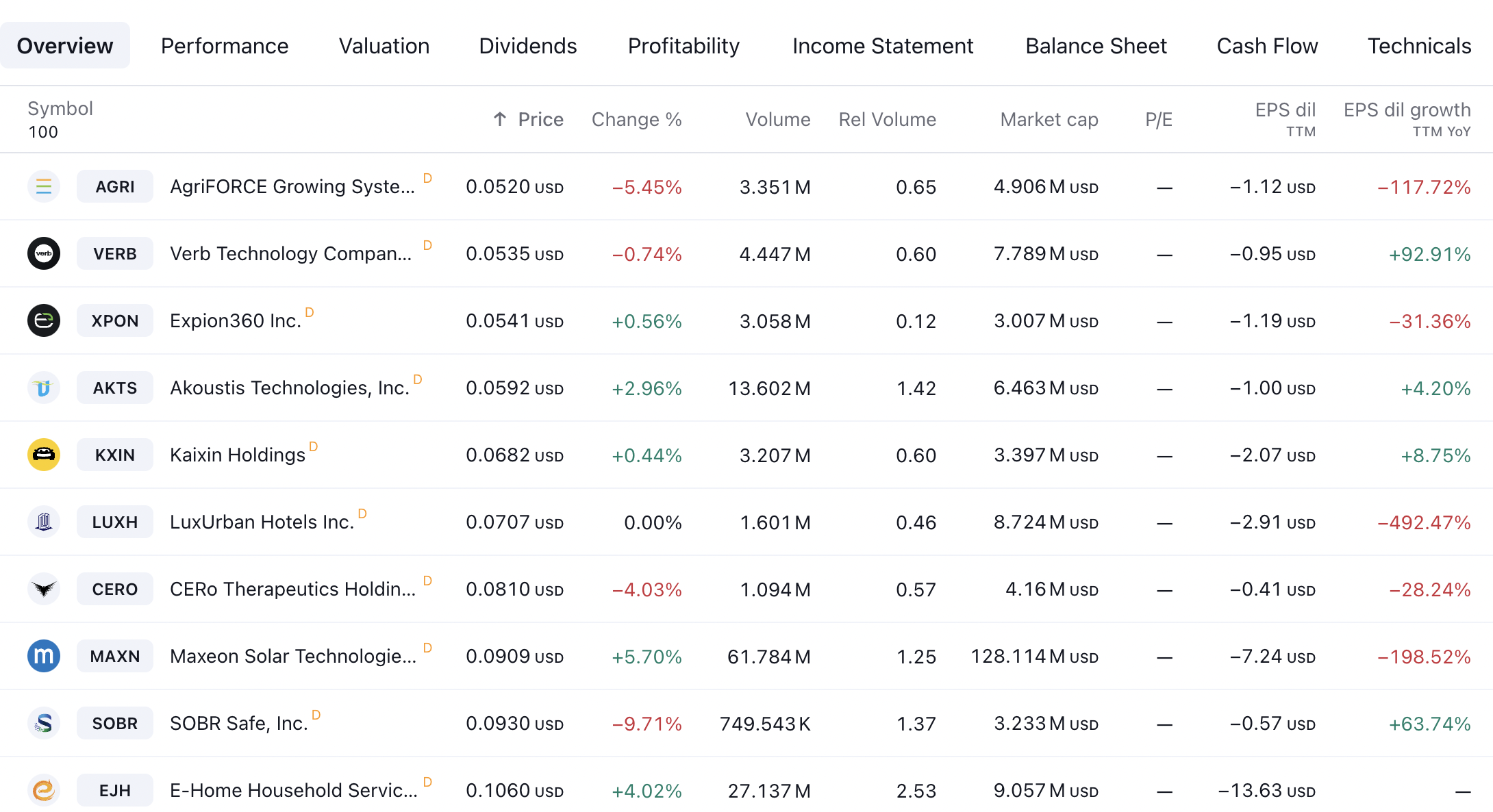
Whereas in India, penny stocks cost less than ₹10 (about $0.012). Such prices allow investors to purchase lots of shares with a small capital outlay. On the contrary, stocks on major exchanges can vary from a few dollars to thousands of dollars.
Company Size and Market Capitalization
Penny stocks are usually associated with companies with extremely low market capitalizations. For those unaware, market capitalization sums up the market value of a company’s outstanding shares. It serves as an indicator of a company’s size and overall value in the market.
Often, penny stock companies fall within the micro-cap (typically between $50 million and $300 million) or even nano-cap (below $50 million) categories. This makes them riskier investments, as they may lack proven business models or steady revenue streams.
In contrast, larger companies listed on major exchanges tend to have substantial market capitalizations. They typically have established track records and stronger financial positions.
Regulation and Transparency
Major stock exchanges are governed by regulatory bodies like the SEC. Meaning, the respective stocks are subject to strict regulations and reporting requirements.
On the other hand, penny stocks are often listed on OTC markets, so they face less stringent regulations. This makes it harder for investors to conduct thorough research.
Types of Penny Stocks
Penny stocks can be broadly classified into two main categories based on where they’re traded; exchange-listed or OTC. Each type has distinct characteristics, levels of risk, and trading environments.
OTC Penny Stocks
Thousands of penny stocks are traded via OTC markets worldwide. Trades are executed with other market participants. Here, brokers and dealers facilitate buy and sell orders – without going through a regulated exchange.

However, since they’re not listed on an exchange, OTC penny stocks also have low visibility. This also makes it tough for investors to find reliable information about the company.
Exchange-Listed Penny Stocks
Not all penny stocks trade on OTC markets. Some are listed on major stock exchanges like the NYSE, NASDAQ, or ASX. These are typically companies on the lower end of the price spectrum. Nevertheless, they still meet the stricter listing requirements of regulated exchanges.
For instance:
- Exchange-listed companies must regularly disclose their financial statements.
- They should also adhere to minimum stock requirements.
- What’s more, they should comply with the corporate governance standards set by the respective government.
Due to these conditions, exchange-listed penny stocks are more transparent. Investors can access financial data and do a thorough fundamental analysis. Moreover, exchange-listed penny stocks are less likely to be associated with fraudulent schemes. They also tend to have higher trading volumes than OTC stocks, making buying or selling shares easier.
Benefits of Penny Stocks Trading
Here are some reasons why you might consider penny stocks:
- Low Capital Investment – Undoubtedly, one of the main benefits of penny stock trading is the low entry barrier. Unlike blue-chip stocks, which can be costly, penny stocks are priced under $5. This makes them more attainable to investors.
- High-Profit Potential – As penny stocks represent small, growing companies – they can potentially deliver huge returns. They can experience dramatic price increases in a short period. Several blue chip companies in today’s market – such as Amazon and Apple, were once penny stocks.
- Opportunity to Invest in Emerging Sectors – Penny stocks frequently come with rapidly innovating sectors. This allows you to potentially capitalize on groundbreaking ideas before they reach mainstream markets.
- Easy to Diversify – Due to the low cost of penny stocks, traders can build a diversified portfolio without needing substantial capital. This helps to spread risk across multiple companies.
Overall, penny stocks can be a great addition to an investment portfolio. However, they’re also extremely risky – therefore, it’s best to proceed with caution.
Top Tips for Finding the Best Penny Stocks 2024
Identifying which companies have real potential is no easy feat. In this section, we’ll dive into some key factors that’ll help you find the best penny stocks in 2025.
Common Sectors Where Penny Stocks Thrive
Penny stocks can be found in virtually all sectors. However, some sectors have a higher upside potential, especially those involved in emerging concepts, such as robotics and green energy.
Understanding which sectors foster thriving penny stocks can help investors focus on promising areas.
Technology
The tech sector is one of the most dynamic and promising spaces for penny stocks. It’s ripe for innovation – from startups developing AI and blockchains to cybersecurity and fintech.
For instance:
- NVIDIA, the market leader in GPUs, traded for less than $1 in the early 2000s. However, the company capitalized on the growing demand for GPUs in gaming, AI, and data centers. Currently, NVIDIA shares trade for over $113.
- Another example is Qualcomm, which traded under $5 per share in the late 1990s. It’s now a leading technology company with a substantial market capitalization. Its stock trades on the NASDAQ at around $170.
While the majority of small-cap tech companies are still in the developmental stage, they offer significant growth potential. This is especially the case if the technology gains traction.
Biotech and Healthcare
Biotech penny stocks also have the potential to explode in value. This happens when new drug launches, successful clinical trials, or regulatory licenses occur. Companies focused on innovative treatments, gene editing, or medical devices are often categorized as penny stocks during their early stages.
However, biotech stocks are incredibly volatile. For instance, FDA approvals could lead to skyrocketing stock prices. On the other hand, failed trials or regulatory setbacks could result in sharp declines. One example is Novavax – a pharma company that was priced below $5 in 2019.
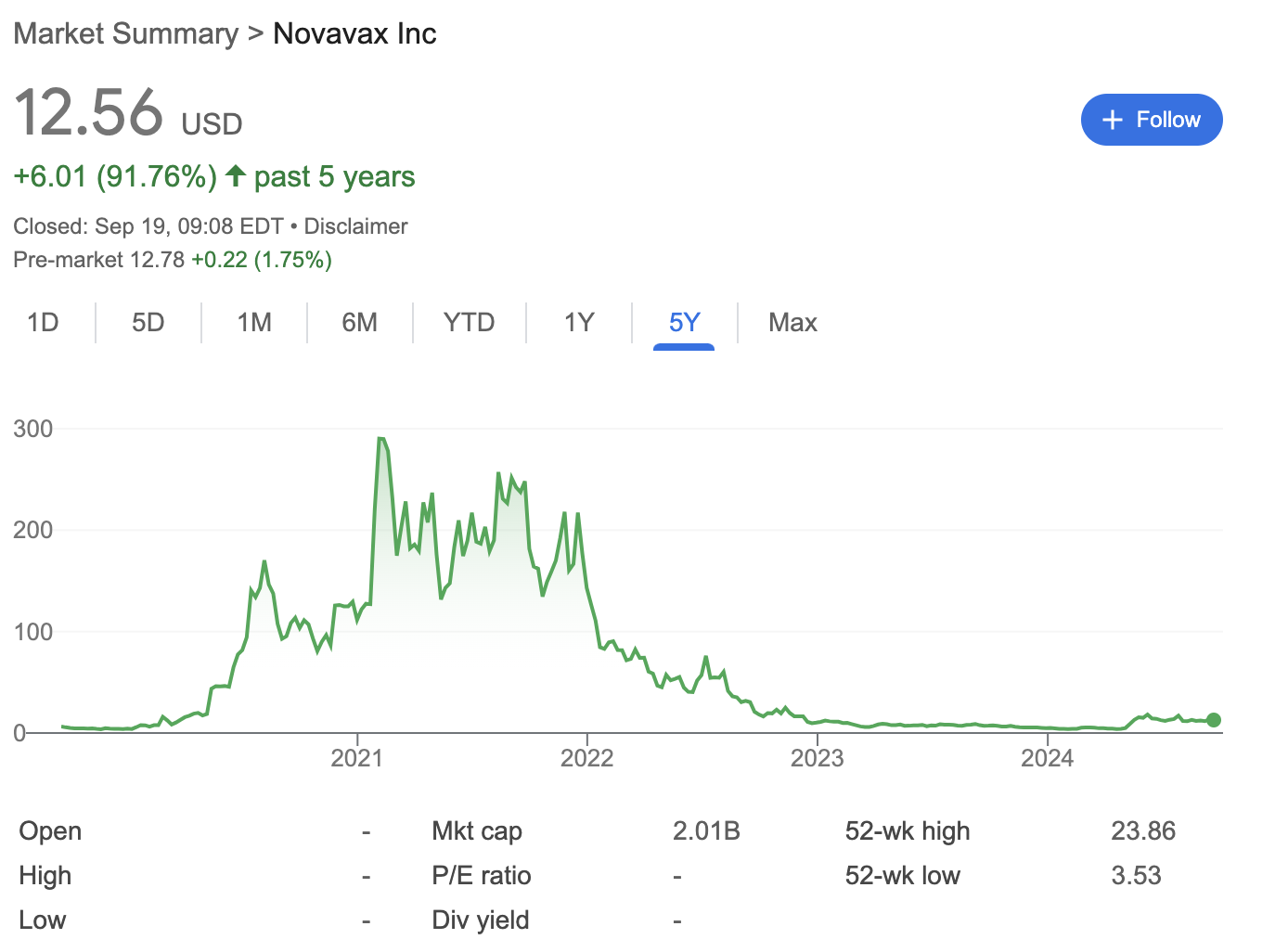
At its peak, NVAX soared from a low of $3.50 to nearly $300 per share within a year. This was driven by its groundbreaking COVID-19 vaccine. However, it’s crucial to remember that such meteoric rises are rare. In fact, in 2024, NVAX’s stock retraced to under $5, once again in the penny stock territory.
Energy and Clean Technology
Energy-related penny stocks, particularly in renewable energy, have recently gained momentum. Companies developing solar, wind, or battery storage solutions are potential candidates for significant growth.
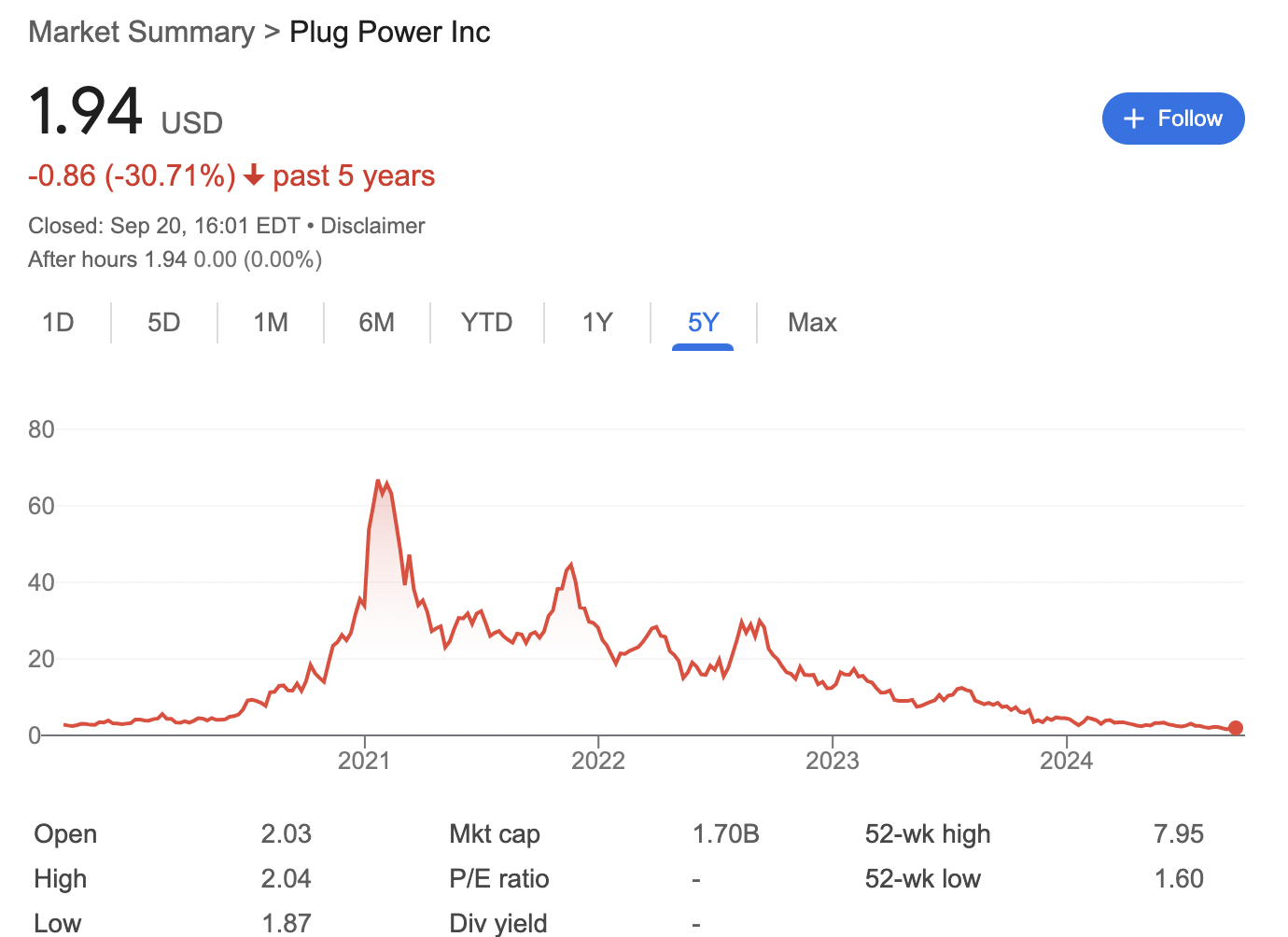
Plug Power is a notable example of a volatile penny stock. In early 2020, PLUG was trading under $5. Plug Power has since seen a meteoric rise, reaching over $70 per share in early 2021. This was due to growing investor enthusiasm for green energy and its expanding partnerships.
Despite this impressive climb, PLUG’s stock has experienced volatility and fluctuations. In 2024, the stock once again fell below $5. This stock underscores the risks associated with penny stocks.
Mining and Commodities
Commodities and metals also flourish in a volatile economic environment. This is particularly relevant for companies related to precious metals like gold, silver, and lithium. They can see their stock price soar when they discover valuable resources and when metal prices rise.
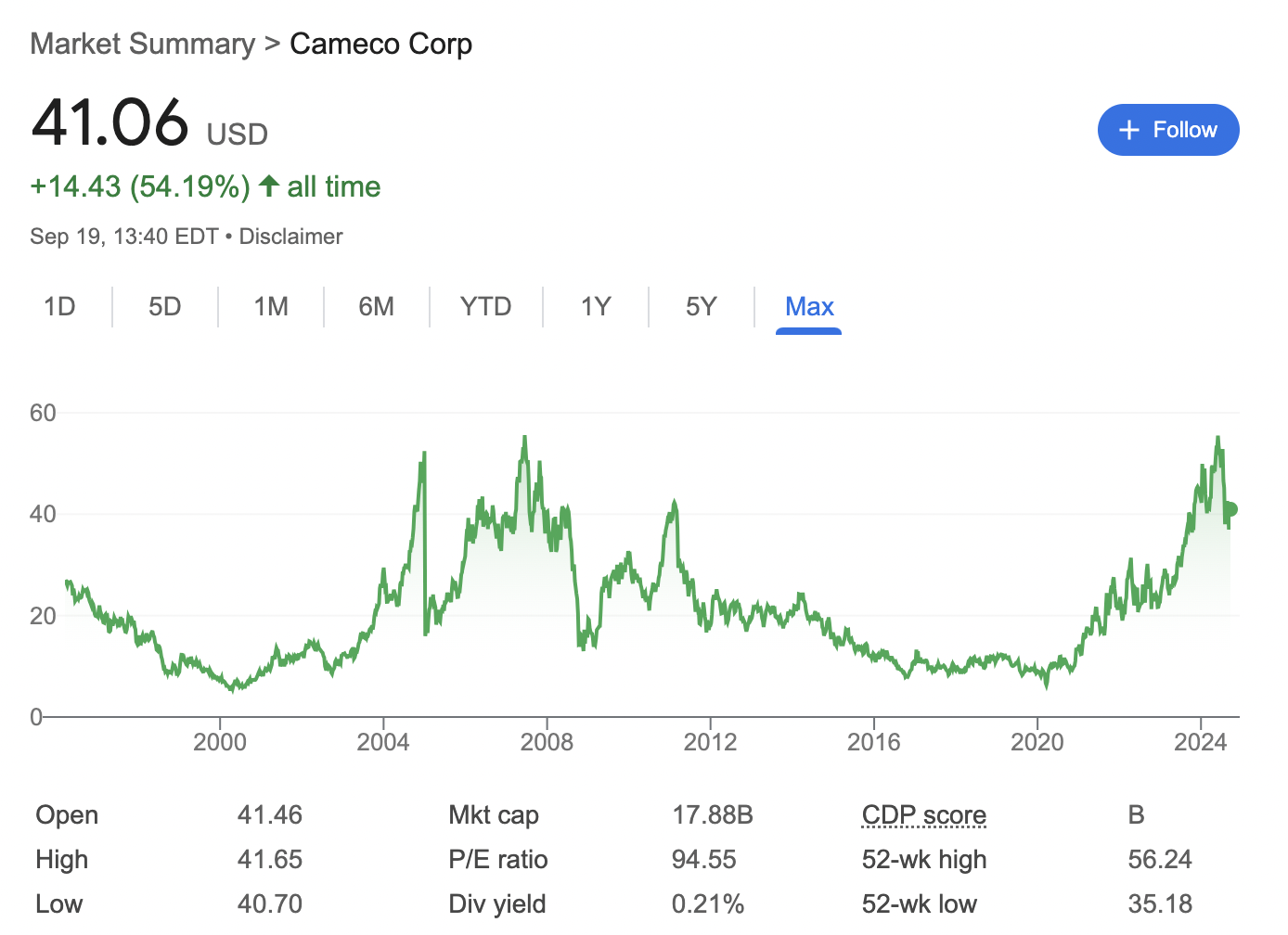
One example is the Cameco, one of the world’s largest Uranium producers.
- Cameco traded as a penny stock during the early 2,000s.
- As the demand for Uranium increased due to growing interest in nuclear energy, Cameco’s stock began to rise.
- Cameco has grown substantially since then – with its market capitalization now in the billions.
Remember that mining penny stocks have risks tied to fickle commodity prices and geopolitical factors.
Where to Find Penny Stocks
If you’re new to investing, you might need some guidance in finding the next opportunity.
Here are key sources to discover promising penny stocks:
- Stock Screeners – These valuable tools allow investors to filter stocks falling under specific criteria. For instance, you can sort stocks based on price, market capitalization, volume, or industry. Many financial platforms offer customizable screeners to help identify penny stocks.
- News and Financial Platforms – Staying updated on the latest market news can help investors discover potential penny stock opportunities. Many financial news websites and newsletters highlight up-and-coming companies.
- Social Media and Forums – Online communities, forums, and social media are the go-to places for discovering penny stock tips. Retail investors frequently exchange ideas, share stock picks, and discuss the latest under-the-radar firms.
- Investment Research and Analyst Reports – You can also research reports from investment firms or independent analysts. These provide valuable insights into penny stocks with growth potential. Meaning, you might come across the next 100x company.
- Online Brokers – Brokerage platforms are also an excellent resource for handpicking companies. These integrate screeners and research tools to identify the best penny stocks in 2025. You could even engage in penny stock copy trading by mirroring other successful investors
Once you shortlist promising penny stocks, it’s time to take a closer look at them – as we explain below.
What to Look for in Penny Stocks
When identifying the best penny stocks, certain characteristics can help investors assess their potential.
Innovative Products or Services
For a company to thrive, it needs a unique product or service that sets itself apart. No matter the sector, companies that offer disruptive innovations tend to have greater potential for rapid growth. You can start by researching the company’s revenue source.
Determine if they solve a real problem or fill a market gap – especially when considering competitors. Patents or proprietary technology can also solidify the company’s position. New firms with breakthrough products offer significant opportunities for gains.
Evaluate Management Teams
A company’s success largely depends on its management team. Its leadership’s knowledge and capabilities can make or break the business. Strong management teams often have a proven track record of growing businesses or navigating challenging industries.
- For instance, a tech penny stock with an industry expert CEO is more likely to succeed.
- On the flip side, companies with inexperienced leadership or frequent management changes may face higher risks.
You can research the management team by reviewing company reports, press releases, and interviews.
Look for Strong Financials
Although up-and-coming companies might not be profitable yet, they should show signs of financial stability. This is why you must examine the financial statements closely. This includes studying balance sheets, income, and cash flow statements.
Here are key financial metrics to watch:
- Revenue – Consistent or growing revenue indicates that the company is expanding and attracting more business. It signals future potential even if the company isn’t profitable.
- Debt Levels – Pay close attention to the company’s debt-to-equity ratio. Companies with high debt levels may struggle to manage their financial obligations.
- Cash Flow – Check if the company has positive cash flow. Or if it’s burning through cash too quickly. A positive cash flow indicates the firm can cover operational costs. Conversely, an excessive cash burn indicates potential financial concerns.
Maintaining strong financials ensures penny stocks position themselves for long-term success.
Volume and Liquidity Considerations
Many investors overlook the liquidity factor when looking for the best penny stocks. Liquidity determines if your stock can easily be traded – crucially, without impacting its price. Since stocks typically have lower trading volumes, they also have low liquidity.
In other words, prices can fluctuate significantly even with small trades. Therefore, evaluating the average daily trading volume is essential when considering penny stocks. Stocks with higher liquidity are generally less risky – as they are easier to sell at desirable prices.
Use News for Insights
Staying up-to-date with the latest news is crucial when investing in penny stocks. News about product launches, regulatory approvals, partnerships, and earnings reports can immensely affect a stock’s price.
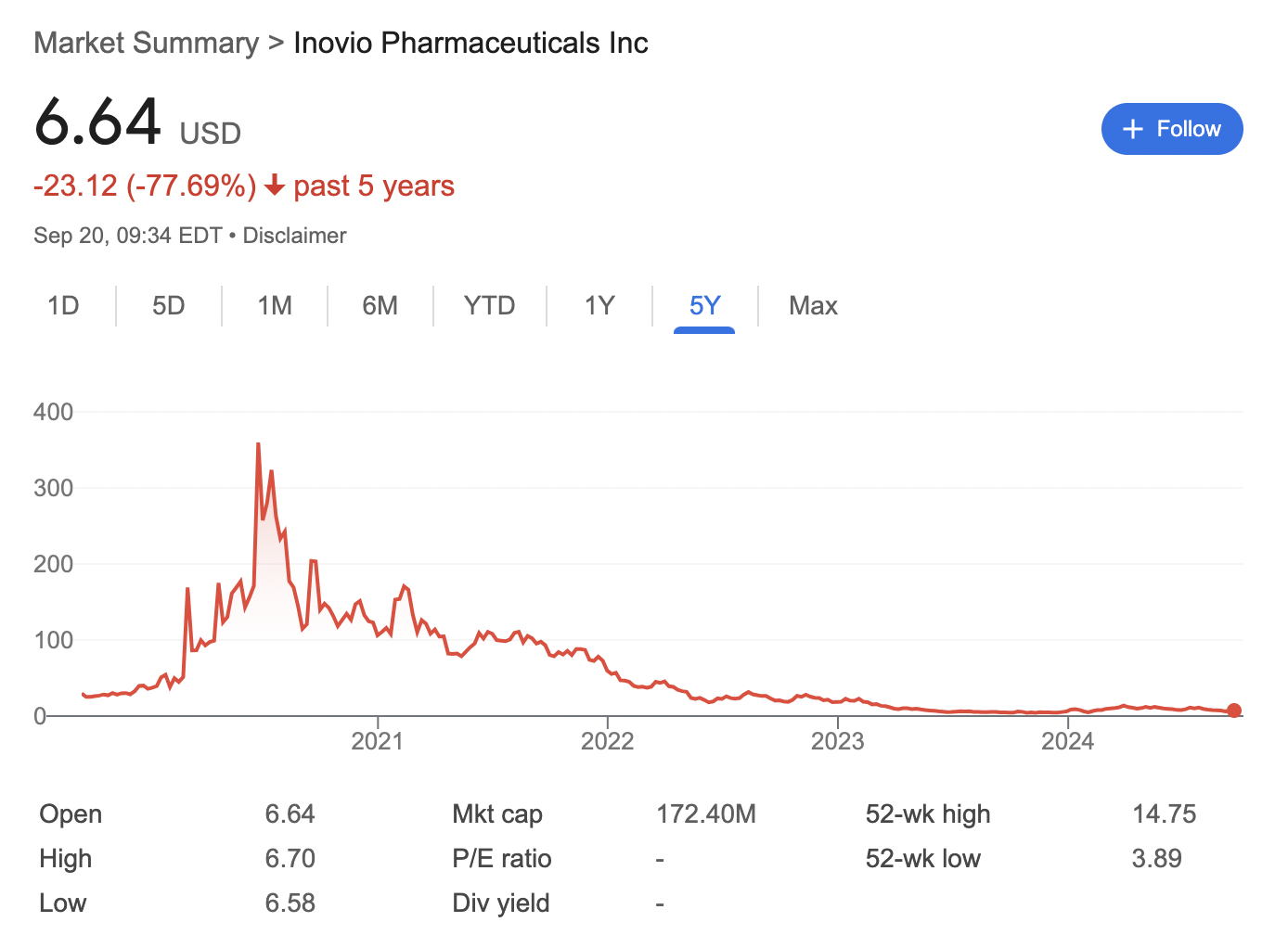
For instance, biotech penny stocks see huge price swings based on FDA approvals or drug trial success. In 2020, Inovio Pharmaceuticals, a former penny stock, saw its stock price skyrocket after releasing news about its COVID-19 vaccine development.
Long-Term Investment vs Short-Term Penny Stock Trading
When it comes to penny stocks, investors can choose between long and short-term strategies. Each approach has its own risks and rewards.
Long-Term Penny Stock Investing
This approach involves holding onto penny stocks for months or years, expecting the company to grow in value over time. Long-term investors concentrate on fundamental analysis, examining the company’s finances, team, and growth prospects.
While this approach ignores short-term volatility, it still comes with significant risks. This is because many penny stocks fail to deliver long-term returns.
Short-Term Penny Stock Trading
Due to their unstable nature, penny stocks offer plenty of short-term trading opportunities. In this approach, you aim for quick profits by buying and selling within hours or days. For instance, you could use day, swing, or price action trading strategies.
With CFDs, you can also go long or short on penny stocks. You can also find brokers offering leverage, although this increases the risk spectrum considerably.
Nonetheless, successful short-term trading relies heavily on technical analysis skills. Traders must be adept at reading charts, identifying patterns, and using indicators. This analytical approach helps predict price movements and execute timely stock trades.
Common Mistakes to Avoid in Penny Stocks Trading
We’ve discussed the benefits and risks of stocks. Next, we’ll explore the common mistakes to avoid as a beginner.
Not Doing Sufficient Research
Penny stocks require significant research – even more so than traditional blue-chip companies. While you can utilize news and online forums, you must dig deeper into the company.
As discussed, understand the management team behind the stock, its product offerings, and overall business strategy.
Ignoring Liquidity Issues
With low liquidity, penny stocks can be difficult to trade. Put otherwise, you might not be able to cash out when you want to. Or, you might be compelled to sell at a loss due to unfavorable spreads.
Before purchasing any penny stock, check its average trading volume. Stocks with higher volume tend to be more liquid, making executing trades at your desired price easier.
Falling for Pump-and-Dump Schemes
Pump-and-dump schemes are rampant in the penny stock market. For instance, a penny stock might be artificially inflated through false or misleading info. As more investors get trapped in the hype, the stock price rises. Then, the scammers sell their shares in bulk – causing the stock to plummet.

This leaves other investors with worthless shares. Considering these schemes, it’s best to be wary of analysts promising quick and substantial profits. If a stock’s price rises rapidly without any substantial news or company progress, it could be a red flag.
Overleveraging
While penny stocks are typically low-priced and highly volatile, some traders still use leverage to maximize gains.
- For example, using 10x leverage, an initial investment of $1,000 can control $10,000 worth of stocks.
- If the stock price moves favorably, the profit is significantly larger than an unleveraged trade.
- While leverage can boost profits, it also amplifies losses.
In a highly volatile market like penny stocks, this can be disastrous. A minor fluctuation in the stock price could result in significant losses when trading on margin.
Holding Onto Losing Stocks
Another common mistake in penny stock trading is holding onto losing stocks. Typically, traders do this hoping that the stock will rebound. However, many small-cap companies may not have the financial stability to recover after a price decline.
If a stock slips below a preset price, it’s often smarter to cut your losses and move on. Holding on, hoping for a turnaround, can worsen the losses.
That said, you might consider buying more stock at a lower price – if your research indicates that the company has strong potential. This enables you to capitalize on the dip.
Navigating the world of penny stocks can be exciting, but managing the inherent risks effectively is essential. Here are some precautionary steps to take:Risk Management for Penny Stock Trading
Top Brokers for Penny Stocks Trading
Not all brokerage platforms offer penny stocks. Since they’re highly risky, choosing a reputable and regulated platform is highly important.
Here are five brokerage platforms suitable for penny stock trading.
1. AvaTrade – Trade Penny Stock CFDs at 0% Commission
AvaTrade is regulated by multiple authorities worldwide. It offers a wide range of financial instruments, including stocks, forex, indices, bonds, crypto, and more. This covers penny stocks that are listed on global exchanges. However, trading is handled via CFDs – which represent the penny stock’s spot price.
Meaning, you can go long or short on stocks without owning the underlying shares. Stock CFDs can also be leveraged up to 5x on AvaTrade. The platform offers robust features like real-time data and market analysis. Experienced traders can also access MT4 and MT5 for advanced tools.

Furthermore, AvaTrade facilitates copy trading via AvaSocial. The broker doesn’t charge any commission on stock CFDs. It also offers tight spreads for most markets. Moreover, AvaTrade’s educational guides are highly resourceful for novice traders.
Pros: Cons:
2. Charles Schwab – Advanced Research Tools for Finding Penny Stocks
Charles Schwab offers a suite of comprehensive investment services. It provides access to both exchange-listed and OTC penny stocks – making it a versatile platform. Exchange-listed stocks can be traded commission-free.
On the other hand, Charles Schwab charges a flat fee of $6.95 for OTC trades. This will be cost-effective for those trading larger quantities. Charles Schwab also features robust research and screening tools for picking the best penny stocks. The broker’s educational resources are particularly valuable for novice traders.

Charles Schwab is also a fully regulated broker, overseen in the US, UK, Hong Kong, and Singapore. Meaning, you also get access to international penny stocks. It offers both web and mobile-based trading platforms. Following its TD Ameritrade acquisition, users can also access the ThinkorSwim platform, further enhancing its offerings.
Pros: Cons:
3. Fidelity – Trade OTC Penny Stocks at 0% Commission
Fidelity stands out as one of the top choices for penny stock trading. It offers commission-free trading on OTC markets with no account minimum. It also provides access to a wide range of stocks on major US exchanges and international markets.
In fact, Fidelity lets you buy stocks with as little as $1 via fractional shares. In other words, you don’t need a lot of capital to diversify. Fidelity also has an extensive ‘News and Research’ section on fundamental analysis. This includes comprehensive reports and charts on all supported stocks. Additionally, you can set alerts for news related to your favorite companies.

Stock options are also available for those who prefer short-term penny shares trading. Professionals can also benefit from the Active Trader Pro terminal, which has advanced trading tools. Fidelity is also strongly regulated by multiple authorities and supports trading in 25 currencies.
Pros: Cons:
4. Interactive Brokers (IBKR) – Advanced PennyStocks Trading for Professionals
IBKR caters to advanced traders with its sophisticated platform and global market access. IBKR offers an array of penny stocks across multiple exchanges and OTC markets. OTC trade commissions are as low as $0.0005 per share and a $1 minimum per trade.
What’s more, for US-listed stocks, the commission is 0%. If you’re a professional, you can also benefit from lower OTC trading commissions – based on your volume. Its advanced trading platform, Trader Workstation (TWS), offers robust market analysis tools.
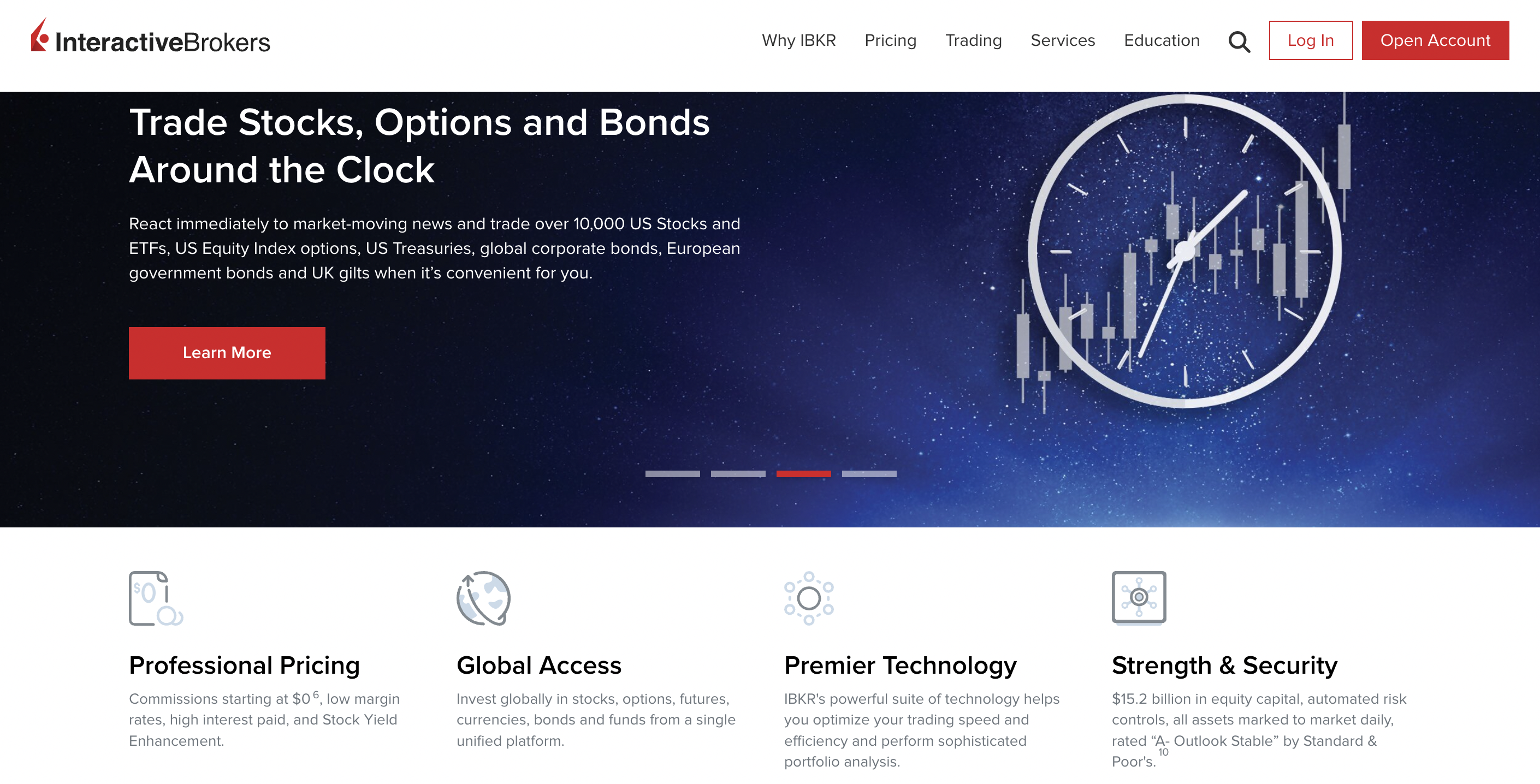
At IBKR, traders can tap into a wealth of market research resources. This includes real-time news feeds and comprehensive market scanners. It also boasts licenses from heavyweight authorities like the SEC, FINRA, NYSE, and FCA. While IBKR is excellent for professionals, it has a steep learning curve for novices.
Pros: Cons:
5. TradeStation – Access Market Research Data on Emerging Stocks
TradeStation is another top pick for trading penny stocks. It offers an impressive range of research tools, including emerging and OTC market analysis. However, users must pay a monthly fee to access the data. TradeStation also claims to have an advanced order routing technology – which improves the price per share obtained.
This can be crucial in the volatile stock market, where every fraction of a cent counts. TradeStation also has sophisticated stock screening tools like the Scanner app and RadarScreen. TradeStation is also SEC-regulated, ensuring safety. It also offers access to international stock markets.

TradeStation charges a flat commission of $0.005 per share for all OTC stocks. However, there’s a minimum commission requirement of $1 per executed order and a maximum of $50. But for US exchange-listed penny stocks, TradeStation has a 0% commission policy.
Pros: Cons:
Best Alternative to Penny Stock Trading
Successful penny stock trading demands significant research and constant market monitoring. The process can be overwhelming and time-consuming. Trading bots present an attractive alternative.
These automated tools carry out trades based on pre-set criteria. They can be especially useful for those preferring short-term trading.
- For instance, Algobot, best trading bot for crypto and forex trading, uses sophisticated AI algorithms to find the best penny stocks.
- It analyzes market trends, price action, and trading patterns. It adapts strategies based on real-time data, optimizing entry and exit points.
- Additionally, Algobot manages risk by setting stop-loss orders and diversifying investments. Users can also choose from a three-tiered risk setting.
- Algobot works with all leading brokers – giving traders the freedom to choose regulated platforms for added security.
- Beyond stocks, Algobot, Best AI trading bot, supports commodities, forex, crypto, and indices. This way, you can diversify your funds.
In a nutshell, the best trading bots offer you a passive and disciplined approach to penny stock trading. As such, you needn’t stress about picking the right stocks or timing the market.
Conclusion
Penny stocks represent a unique segment of the stock market. They offer huge profit opportunities but are also highly risky. Moreover, choosing the right stocks to invest in can be challenging.
Ultimately, penny stock trading requires careful consideration and strategy. To enhance your trading experience, consider using a reputable trading bot. This will streamline your penny stock positions and improve your chances of success.
FAQs
What are penny stocks?
Penny stocks are company shares that trade for less than $5. They offer high growth potential but are also risky due to high volatility and small market capitalizations.
How to find the best penny stocks?
To identify top ones, conduct thorough research on company fundamentals, management, and market potential. Additionally, it’s vital to monitor trading volumes and stay informed about industry trends.
How long should you hold penny stocks?
Short-term penny stock traders may buy and sell within days. On the other hand, long-term investors might hold until the company shows significant growth.
Why do most penny stocks fail?
Most such stocks fail due to poor financial health, lack of market demand, and mismanagement. Additionally, many small-cap companies do not have the resources or infrastructure to compete effectively in their industries.
Slot Dana: Dengan SLOTVIP Terbaik dengan Deposit Mudah dan Jackpot Besar di 2025
Pergantian era teknologi dan digitalisasi telah mengubah cara orang menikmati hiburan. Salah satu tren yang terus berkembang adalah permainan slot online, yang menawarkan kenyamanan dan kemudahan akses dari rumah. Di antara banyaknya platform yang tersedia, Slot Dana muncul sebagai salah satu pilihan terbaik. Dengan menawarkan kemudahan dalam deposit, jackpot besar, dan pengalaman bermain yang lancar, Slot Dana telah berhasil menarik perhatian banyak pemain. Pada artikel ini, kita akan membahas berbagai fitur menarik yang ditawarkan oleh Slot Dana csssuxxx.com serta mengapa platform ini begitu diminati oleh para pemain slot online.
Kemudahan Deposit Tanpa Potongan: Deposit Hanya 5000 IDR
Salah satu alasan mengapa Slot Dana begitu populer adalah karena kemudahan dalam melakukan deposit. Pemain hanya perlu melakukan deposit sebesar 5000 IDR tanpa khawatir ada potongan biaya tambahan. Ini adalah fitur yang sangat dihargai oleh pemain, mengingat banyaknya platform lain yang sering mengenakan biaya tambahan atau potongan pada setiap transaksi deposit.
Keuntungan Fitur Deposit Tanpa Potongan
- Terjangkau: Dengan deposit yang rendah, semua orang, mulai dari pemula hingga pemain berpengalaman, bisa ikut merasakan keseruan bermain slot online tanpa harus khawatir mengeluarkan banyak uang.
- Tanpa Biaya Tambahan: Setiap deposit yang dilakukan akan masuk penuh tanpa ada potongan biaya tambahan yang mengurangi saldo pemain.
- Proses Cepat: Deposit dilakukan dengan cepat dan mudah, memungkinkan pemain untuk segera memulai permainan mereka.
Taruhan Minimum Hanya 100 IDR: Keseruan Tanpa Beban Finansial
Slot Dana juga menawarkan taruhan dengan minimum hanya 100 IDR. Fitur ini sangat menarik, terutama bagi mereka yang ingin mencoba keberuntungan dalam permainan slot online tanpa harus mengeluarkan banyak uang. Dengan taruhan serendah 100 IDR, siapa saja bisa merasakan sensasi bermain di mesin slot tanpa tekanan finansial.
Manfaat Taruhan Minimum 100 IDR
- Keseruan Tanpa Tekanan Finansial: Pemain dapat menikmati permainan tanpa rasa khawatir akan kerugian besar, karena taruhan yang sangat rendah.
- Lebih Banyak Waktu Bermain: Dengan taruhan rendah, pemain dapat memperpanjang waktu bermain mereka, meningkatkan peluang untuk menang.
- Cocok untuk Pemula: Pemain baru bisa memulai dengan taruhan kecil, yang memungkinkan mereka untuk belajar cara bermain tanpa risiko besar.
Anti “Rungkad” (Tidak Ada Pembekuan Game) untuk Pengalaman Bermain Tanpa Gangguan
Salah satu masalah terbesar yang sering dihadapi pemain slot online adalah adanya pembekuan atau lag yang mengganggu jalannya permainan. Slot Dana memastikan pengalaman bermain yang lancar dan tanpa gangguan, bahkan saat memutar game dengan grafis yang kompleks dan fitur bonus yang menarik.
Fitur Anti-Rungkad di Slot Dana
- Desain Perangkat Lunak yang Teroptimasi: Slot Dana menggunakan perangkat lunak terbaik yang memastikan permainan berjalan dengan lancar tanpa pembekuan, bahkan di perangkat dengan spesifikasi lebih rendah.
- Pengalaman Bermain yang Responsif: Baik Anda bermain di desktop, laptop, atau ponsel, Slot Dana memberikan pengalaman bermain yang mulus di semua perangkat.
- Tanpa Gangguan: Tidak ada gangguan atau masalah koneksi yang menghambat jalannya permainan, memberikan kenyamanan bagi pemain selama bermain.
Berbagai Jenis Permainan Slot Populer: Pilihan untuk Semua Orang
Slot Dana menawarkan berbagai pilihan permainan slot yang mengesankan, dari tema klasik hingga tema modern yang inovatif. Dengan banyaknya pilihan yang tersedia dana slot, pemain dapat dengan mudah menemukan permainan yang sesuai dengan selera dan preferensi mereka.
Jenis-jenis Permainan Slot yang Tersedia di Slot Dana
- Slot Klasik: Bagi pemain yang menyukai permainan sederhana dengan tiga gulungan, Slot Dana menyediakan permainan slot klasik yang mudah dimainkan.
- Video Slot: Untuk pengalaman lebih modern dan imersif, tersedia berbagai pilihan video slot dengan banyak payline, wild, dan bonus menarik.
- Jackpot Progresif: Bagi pemain yang berambisi memenangkan hadiah besar, jackpot progresif adalah pilihan terbaik. Setiap putaran meningkatkan jackpot hingga mencapai jumlah yang sangat besar.
Dapatkan Bonus dan Promosi Menarik dari Slot Dana
Slot Dana tidak hanya menawarkan permainan yang seru, tetapi juga berbagai bonus dan promosi menarik yang dapat meningkatkan peluang kemenangan Anda. Dengan berbagai jenis bonus, seperti cashback, bonus member baru, dan referral, pemain bisa mendapatkan nilai lebih dari setiap permainan yang mereka mainkan.
Jenis-jenis Bonus yang Tersedia di Slot Dana
- Bonus Sambutan: Pemain baru akan mendapatkan bonus sambutan setelah mendaftar, memberikan tambahan dana untuk memulai permainan.
- Cashback: Pemain yang mengalami kerugian dapat memperoleh cashback sebagai bentuk kompensasi dan tetap bisa melanjutkan permainan mereka.
- Bonus Referral: Pemain yang mengajak teman untuk bergabung akan mendapatkan bonus referral, yang memungkinkan mereka memperoleh keuntungan tambahan.
Keamanan Transaksi yang Terjamin dengan Enkripsi Tingkat Tinggi
Keamanan adalah salah satu hal yang paling diperhatikan di dunia perjudian online. Slot Dana menggunakan teknologi enkripsi tingkat tinggi untuk memastikan bahwa data pribadi dan transaksi keuangan pemain terlindungi dengan baik. Selain itu, platform ini memiliki lisensi resmi dari PAGCOR, yang menambah kepercayaan pemain terhadap situs ini.
Fitur Keamanan Slot Dana
- Enkripsi SSL: Semua data dan transaksi pemain dienkripsi dengan enkripsi SSL untuk melindungi informasi pribadi dan finansial.
- Metode Pembayaran Terpercaya: Pemain dapat melakukan deposit dan penarikan dengan berbagai metode pembayaran yang aman seperti e-wallet, transfer bank, dan QRIS.
- Lisensi Resmi: Slot Dana memiliki lisensi dari PAGCOR yang menjamin keamanan dan kepercayaan dalam beroperasi.
Daya Tarik Deposit Rendah dan Peluang Menang Besar
Keunggulan utama dari Slot Dana adalah kemampuannya untuk memulai permainan dengan deposit kecil, hanya 5000 IDR, namun tetap memiliki peluang besar untuk meraih jackpot dengan slot terpercaya. Platform ini memberikan keseimbangan yang sempurna antara modal rendah dan peluang kemenangan tinggi.
Keuntungan Bermain dengan Deposit Kecil
- Risiko Rendah: Dengan deposit kecil, pemain bisa bermain dengan risiko minimal namun tetap memiliki peluang untuk meraih kemenangan besar.
- RTP Tinggi: Slot Dana menyediakan permainan dengan RTP tinggi, memberikan peluang kemenangan yang lebih besar dalam jangka panjang.
- Jackpot Progresif: Pemain bisa memenangkan jackpot progresif dengan modal kecil, yang sangat menggiurkan.
Akses Mudah di Mana Saja dengan Desain Responsif
Dengan semakin meningkatnya penggunaan perangkat mobile, Slot Dana memastikan bahwa slot mereka sepenuhnya responsif dan bisa diakses dengan mudah di berbagai perangkat, baik itu desktop, tablet, maupun ponsel. Platform ini mendukung pengalaman bermain yang mulus di mana saja dan kapan saja.
Keunggulan Bermain di Perangkat Mobile
- Permainan di Mana Saja: Pemain dapat bermain kapan saja dan di mana saja menggunakan perangkat mobile mereka, memberikan fleksibilitas yang lebih besar.
- Desain Responsif: Platform Slot Dana dirancang agar responsif di berbagai perangkat, memastikan tampilan dan gameplay tetap optimal.
- Bonus Khusus Mobile: Pemain yang bermain melalui perangkat mobile sering mendapatkan bonus eksklusif yang meningkatkan peluang mereka untuk menang.
Bergabung dengan Slot Dana Hari Ini dan Mulai Menang
Jika Anda ingin memulai perjalanan Anda dalam dunia slot online, Slot Dana adalah pilihan yang tepat. Dengan deposit rendah, jackpot besar, dan pengalaman bermain yang mulus, Slot Dana memastikan Anda memiliki peluang terbaik untuk meraih kemenangan besar.
Cara Memulai di Slot Dana
- Daftar Sekarang: Buat akun di Slot Dana dan nikmati bonus sambutan untuk memulai.
- Lakukan Deposit: Pilih metode pembayaran yang nyaman untuk Anda dan lakukan deposit pertama Anda.
- Mulai Bermain: Pilih permainan favorit Anda dan mulai putar gulungan untuk memenangkan hadiah besar.
Dengan segala keuntungan yang ditawarkan, Slot Dana benar-benar menjadi platform yang patut dicoba. Jadi, tunggu apa lagi? Daftar sekarang situs slot untuk raih peluang kemenangan Anda!







